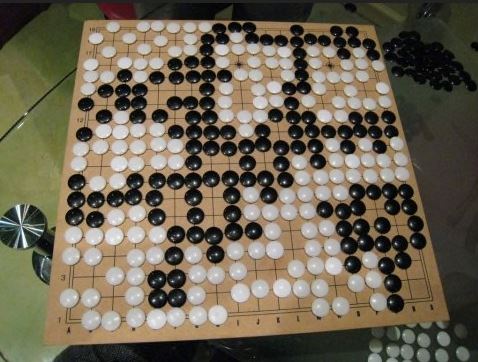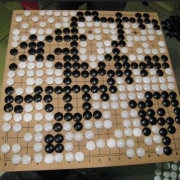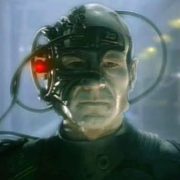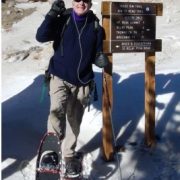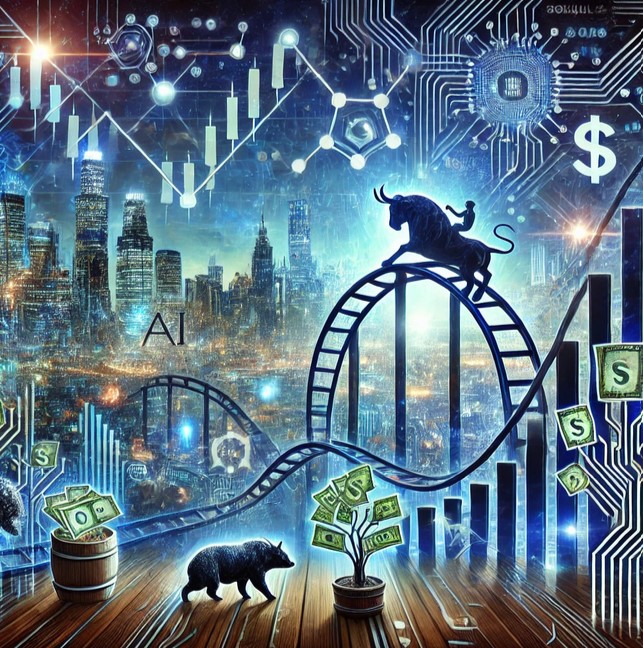After spending better than a half-century in the investment business, I see all decisions boiling down to a single issue: Artificial Intelligence.
Speaking to people at the local PTA, American Legion, the VFW, the Commonwealth Club, people sitting next to me at high school football games, and even my own readers, this is the impression I get.
AI is rapidly working its way into every aspect of our lives. But then I live in Silicon Valley where everyone works in tech or in supporting service industries.
Companies that lead with AI, such as NVIDIA (NVDA), Google (GOOG), Amazon (AMZN), Facebook (FB), and Microsoft (MSFT) will prosper mightily. Those that don’t will disappear.
Technology companies now comprise an amazing 30% of U.S. stock market capitalization and 50% of corporate profits. They are on their way to 100% on both counts. Other industries may see the occasional brief, frenetic stock market rallies, which will quickly fade away.
Investing now is really ALL about technology with the exception of biotech and health care, which you really can consider “soft” technology.
So, I thought it timely to catch up with my old friend, Dr. Ray Kurzweil, head of engineering at Google (GOOG), the co-founder of the Singularity University, and an early AI evangelist.
Some 25 years ago, Kurzweil pitched Google co-founder Larry Page for a venture capital investment in an AI start-up. Larry responded by buying the entire company, even though it was only two weeks old. That brought Kurzweil in-house and gave him the first call on Google’s prodigious resources.
To understand the recent spate of AI breakthroughs you have to go back years ago and see how a computer beat a human in the traditional Chinese game of Go. Long a goal of AI developers, Go is the most complex game ever played by humans, with 324 squares (18 X 18) and 361 stones. That means there are 2.08 X 10 to the 170th power possible moves or more than double the number of electrons in the universe.
Scientists downloaded all known online Go moves in history, of which there were about 1 million. They then programmed a superfast mainframe to simulate 1 billion more Go moves. After that, beating all humans was a piece of cake.
You can apply this approach to more than just games. Google’s Waymo autonomous driving division let cars drive themselves 8 million miles and then simulated another 1 billion miles. That’s why they are so far ahead in the field. 1,000 robotaxis in San Francisco agree with this.
You can also employ the same strategy when asking computers to identify new drugs by running simulations against a decoded human genome. The possibilities boggle the mind.
And the stock market? How about the accuracy of the Mad Hedge Market Timing Index, which takes market data from the last 400 years and then simulates another 1,000 years on top of that? And you wonder why it’s always right, and why I’m up 60% this year.
The fruits of those labors are found today in many Google services, such as Google Assistant and Google Home, which are growing smarter by the day. “Semantic Search” is the order of the day whereby searches are made on the basis of meaning and context, instead of my keywords alone. I work with Google all day long and the progression has been nothing less than astounding.
Just around the corner are “Smart Replies.” Google will be able to read 120,000 books, or 600 million sentences, in ½ second, and come up with the best three possible answers to every question of yours. If you’re willing to wait a few minutes, you can get the best three answers from every book ever written.
The term “AI” was coined at a famed conference at Dartmouth College in 1956. Don’t be intimidated. AI is simply super fast pattern recognition that any off-the-shelf Excel spreadsheet can accomplish done on ever-faster supercomputers.
Kurzweil believes computers will pass the Turing Test by 2029 when their answers to any questions will be indistinguishable from humans. Miniaturization is another exponential trend that will place human intelligence on any smartphone by the 2030s.
Create a bionic link between your smartphone and your brain and the “singularity” is here, which Kurzweil believes will take place by the 2040s.
Kurzweil is a firm believer in the “Law of Accelerating Returns,” whereby the productivity of technology doubles every year. Costs drop by a similar amount, creating a radical deflation. So am I.
He argues that modern economic theories are broken, and I have argued this myself in the past. So much of technology’s output is free, and therefore immeasurable, that true GDP growth has been wildly underestimated.
And you wonder why inflation has been near zero for a decade, while the value of your home has doubled, and the efficiency of your cell phone has improved by a trillion-fold for a lower real price. Kurzweil expects 5 billion cell phones to be in circulation by 2025.
Moore’s law, where semiconductor price/performance doubled every year, reached its theoretical limits in 2016. All of the growth in processing power since then has been due to “3D Stacking,” where layers of processors are piled one on top of the other. The current generation of processors will see a once unimaginable 96 layers.
And if you think this is all very interesting, wait a few years until we get economic quantum computers, which will increase computing power by a trillion-fold at no cost. Quantum computers rely on the infinite number of directions electrons can spin, rather than the simple on-or-off gates of traditional legacy computers. To learn more about quantum computing, please read my last piece on the subject by clicking here.
Sometime in 2019, Kurzweil will publish a sequel to his last book called “The Singularity is Nearer.” It will no doubt be the AI blockbuster of the year.
Before then he is launching into fiction for the first time, publishing “Danielle”, which is about a girl who solves all the problems of the world by the age of 22 with the tools we have available to us today. To learn more about this project and to pre-order the book, please visit www.danielleworld.com .
